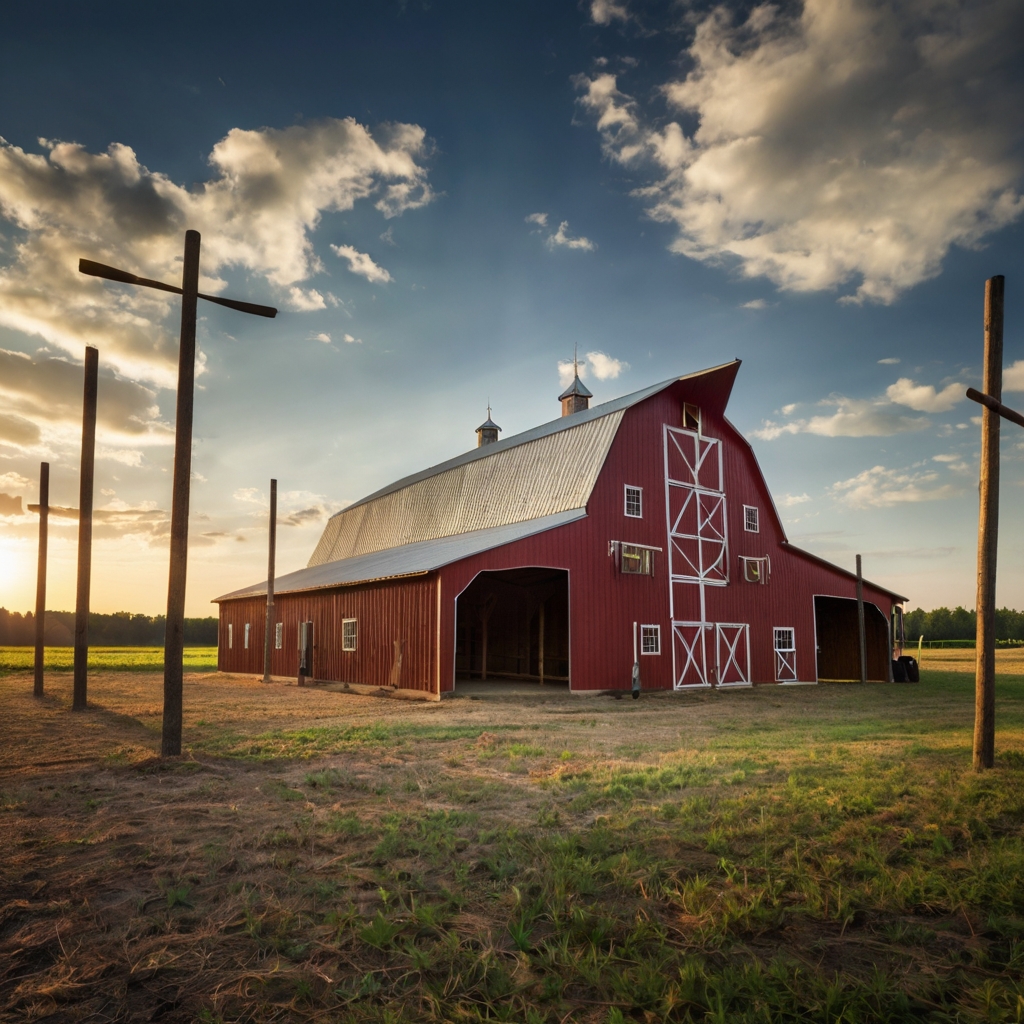Table of Contents
- Introduction to Pole Barns
- The Structure and Design of Pole Barns
- Key Advantages of Choosing Pole Barns
- Diverse Applications of Pole Barns
- Environmental Benefits of Pole Barns
- Cost-Effectiveness of Building with Pole Barns
- How to Maintain a Pole Barn
- Future Trends in Pole Barn Construction
 Introduction to Pole Barns
Introduction to Pole Barns
Pole barns are increasingly recognized for their versatility and cost-efficiency across varying needs. Initially conceived as a practical solution for agricultural storage, pole barns have evolved into highly adaptable buildings catering to many purposes. Whether you’re considering renovations or looking for pole barn builders near you to embark on your next construction project, these structures offer an appealing mix of strength, speed of construction, and flexibility.
The straightforward design of pole barns simplifies the building process while providing a sturdy and functional space. This simplicity makes them durable and economically viable, allowing owners to reap the benefits without complicated construction hurdles.
The Structure and Design of Pole Barns
Pole barns are primarily supported by poles or posts embedded into the ground, which are the foundation for the roof and walls. This construction method speeds up the building process and utilizes fewer materials than conventional construction. The structural skeleton is typically made of laminated wood or steel, providing the backbone that ensures the barn’s longevity and resilience against external forces.
Modern designs also offer various styles and features that enhance aesthetics and functionality. There’s a significant range of architectural possibilities, from customized roof designs to innovative wall systems.
Key Advantages of Choosing Pole Barns
Durability is one of the major advantages of pole barns. These buildings readily resist severe weather conditions because of their sturdy construction and adaptable design. Whether it’s heavy snowfall or relentless rain, a well-built pole barn can endure climatic extremes with minimal impact.
Another compelling advantage is the speed at which pole barns can be erected, allowing for rapid project completion times compared to traditional buildings. Plus, the flexibility in design means these structures can be tailored to fit precise needs, ranging from open spaces to specific architectural motifs, accommodating both function and style in unique ways.
Diverse Applications of Pole Barns
Pole barns have transcended their traditional applications to become highly sought-after structures in diverse sectors. In agricultural settings, they serve as functional spaces for storing equipment, housing livestock, and more. However, their usage has expanded significantly in residential settings. Today, homeowners employ pole barns as garages, workshops, studios, and primary living spaces.
Thanks to their adaptability and cost-effectiveness, pole barns are utilized in commercial contexts, including storage facilities, retail spaces, and office buildings. Their flexibility and potential applications make them versatile assets. The US Department of Agriculture report provides valuable insights into how versatile structures impact agriculture.
Environmental Benefits of Pole Barns
Environmentally, pole barns are highly beneficial. The construction process requires fewer materials, significantly reducing the carbon footprint compared to traditional buildings. Moreover, many builders now prioritize using sustainably sourced materials alongside cutting-edge energy-efficient technologies that minimize the environmental impact and enhance sustainability.
The potential to incorporate solar panels and other renewable energy systems into pole barns further boosts their green credentials. Such advances present an attractive possibility for those who want to develop structures with a low environmental effect and guarantee long-term energy cost reductions.
Cost-Effectiveness of Building with Pole Barns
When considering cost-effectiveness, pole barns emerge as a superior option to conventional structures. They are typically less expensive to build, owing to their efficient use of materials and reduced labor costs. The savings, however, extend beyond just initial construction outlays; pole barns often demand less ongoing maintenance and are resistant to wear and tear, translating into fewer repair expenses over time.
These economic benefits make pole barns an affordable choice upfront and a sound financial investment over the long haul, especially when efficiency and function are key priorities.
How to Maintain a Pole Barn
Maintaining a pole barn is straightforward but requires regular attention. Prioritize checks for structural integrity to identify leaks, cracks, or vulnerabilities. Seasonal weatherproofing is essential to protect against snow, rain, and sun. Roof inspections, repainting, and re-sealing wooden components can extend the barn’s lifespan. Keeping gutters clear of debris and implementing periodic pest control will enhance functionality, ensuring the barn remains valuable.
Future Trends in Pole Barn Construction
The future of pole barns looks promising, driven by innovations in sustainable materials and construction techniques. As eco-friendly practices gain popularity, pole barns are becoming more appealing for urban developments due to their affordability and modern design. This evolution ensures their relevance across various applications.
